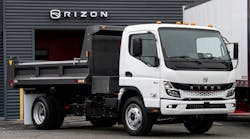With the U.S. EPA implementing more stringent fuel economy and emissions standards under President Obama’s Climate Action Plan, the trucking industry will become even more focused on driving vehicle efficiency improvements.
As is evident on any highway in America, improved aerodynamics are “front and center” on everything from new truck and trailer product offerings to aftermarket bolt-on devices. Adoption of these efficiency improvement technologies has increased over the last five years as product and installation costs have come down dramatically. According to the North American Council for Freight Efficiency (NACFE), approximately 25% of all 53-ft. dry van trailers on the road today are equipped with at least one aerodynamic device.
Beyond improved aerodynamics, a variety of other strategies are being pursued by OEMs, fleet end-users, aftermarket equipment providers, and a number of related stakeholder organizations. These issues were the focus of several technical workshops at the Alternative Clean Transportation (ACT) Expo in May, hosted by NACFE and Carbon War Room, U.S. EPA SmartWay Program and Penske, and Ryder Systems. Sessions focused on the wide variety of aerodynamic improvement systems, idle reduction strategies, 6x2 axles, tire pressure monitoring systems, and driver training programs, as well as examining barriers to adoption.
According to NACFE Executive Director Mike Roeth, “Innovative fleets are currently saving money and enjoying smaller payback periods in the 12- to 20- month time frame through the adoption of these technologies and improving practices focused on efficiency.” Likewise, the Carbon War Room reports that Class 8 fleets in the U.S. can save nearly $45,000 in fuel costs per truck by investing in a basic aerodynamic device, while collectively helping to reduce 50 million tons of CO2.
While fuel efficiency improvements to date have been impressive, it is exciting to think of the environmental and economic benefits that can result via the application of these strategies in the growing natural gas truck segment. According to the California Air Resources Board’s Low Carbon Fuel Standard Program, heavy-duty natural gas trucks already provide a well-to-wheel greenhouse gas emissions benefit of 20% to 25% compared to their diesel counterparts. Through the application of the various efficiency technologies that are being implemented in the diesel truck sector, these impressive emissions and economic benefits can be further compounded. As diesel trucks continue to gain efficiency, natural gas trucks must also continue to focus on such improvements to remain competitive in the marketplace.
To address this, the ACT Expo panel, “NGVs - Keeping Pace with Fuel Efficiency Improvements,” highlighted a variety of efficiency improvement strategies being pursued by the natural gas truck community. Improved gearing and the use of automated transmissions, a variety of advanced injection technologies, and the application of the wide variety of off-engine technologies will all play in the continued improved efficiency of natural gas trucks. As these systems are successfully integrated, the economic and environmental benefits of natural gas trucks will continue to accrue.
These issues will remain a key focus in coming years and play a large role in ACT Expo programming. Save the dates for May 4-7, 2015, and join us in Dallas to be a part of this important conversation.
Erik Neandross is CEO of Gladstein, Neandross & Associates (GNA), the clean transportation and energy consulting firm that organizes the Alternative Clean Transportation (ACT) Expo. Learn more at www.gladstein.org and www.actexpo.com.


